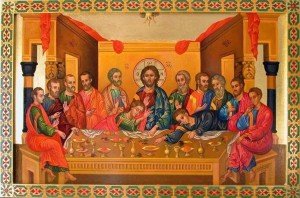In this article I have been looking at the Letter to the Hebrews which is attributed to St. Paul. It begins this way: In times past, God spoke in fragmentary and varied ways to our fathers through the prophets; in this, the final age, he has spoken to us through His Son, Whom He has made heir of all things and through whom He first created the universe. The letter seems to assert that Jesus is no less than God’s very being, albeit this is how we read these words after the Councils that declared Him truly God and truly Man. Affirmations such as this are also found in Colossians and the Gospel of John, both of which speak of the cosmic Christ present with God at the actual creation of all things.
Hebrews emphasizes the importance of Jesus’ humanity. As the pioneer of our salvation, He had to experience what we do in every respect, only so He could be a faithful and compassionate high priest able to sympathize with our weaknesses. Hebrews even says that Jesus had to learn obedience and did so through suffering. Incarnation matters for Hebrews, as it does for John’s Gospel.
All of this tells us that Jesus is God’s archetype of what human beings are called to be. Jesus is Who He is because of His attitudes and behaviors. He literally demonstrated for us how to live as a child of God – a spiritual being – made in the image and likeness of God Himself.
Jesus as the Great High Priest is the central metaphor that dominates most of Hebrews. Announced in 2:17 and 3:1, it becomes central from 4:14 through chapter 10 (why not pick up Hebrews and read these verses). The linguistic home of the metaphor, that is the framework within which it has its meaning, is the temple in Jerusalem, the high priest and, of course, temple sacrifice.
Though the meaning of this language would have been well known to the community to whom Hebrews was written, it is not so among us. Within Judaism, the temple in Jerusalem was the dwelling place of God on earth. Because many people today automatically think of sacrifice and sin as intrinsically connected, it is important to know that in Judaism not all sacrifices had to do with sin. Some were about hosting God – about feeding the God who dwelled in the temple. Some were sacrifices of thanksgiving, petition and purification, none of which intrinsically involved forgiveness of sin as the motivation. Sacrifices that did involve sin were sacrifices of reconciliation in which the community, represented by temple priests, offered a sacrifice as a way of making peace with God.
This is important to note, given that the Eucharist is a sacrifice of Thanksgiving. We do well to think about this!
Just why do we celebrate the Divine Liturgy?



